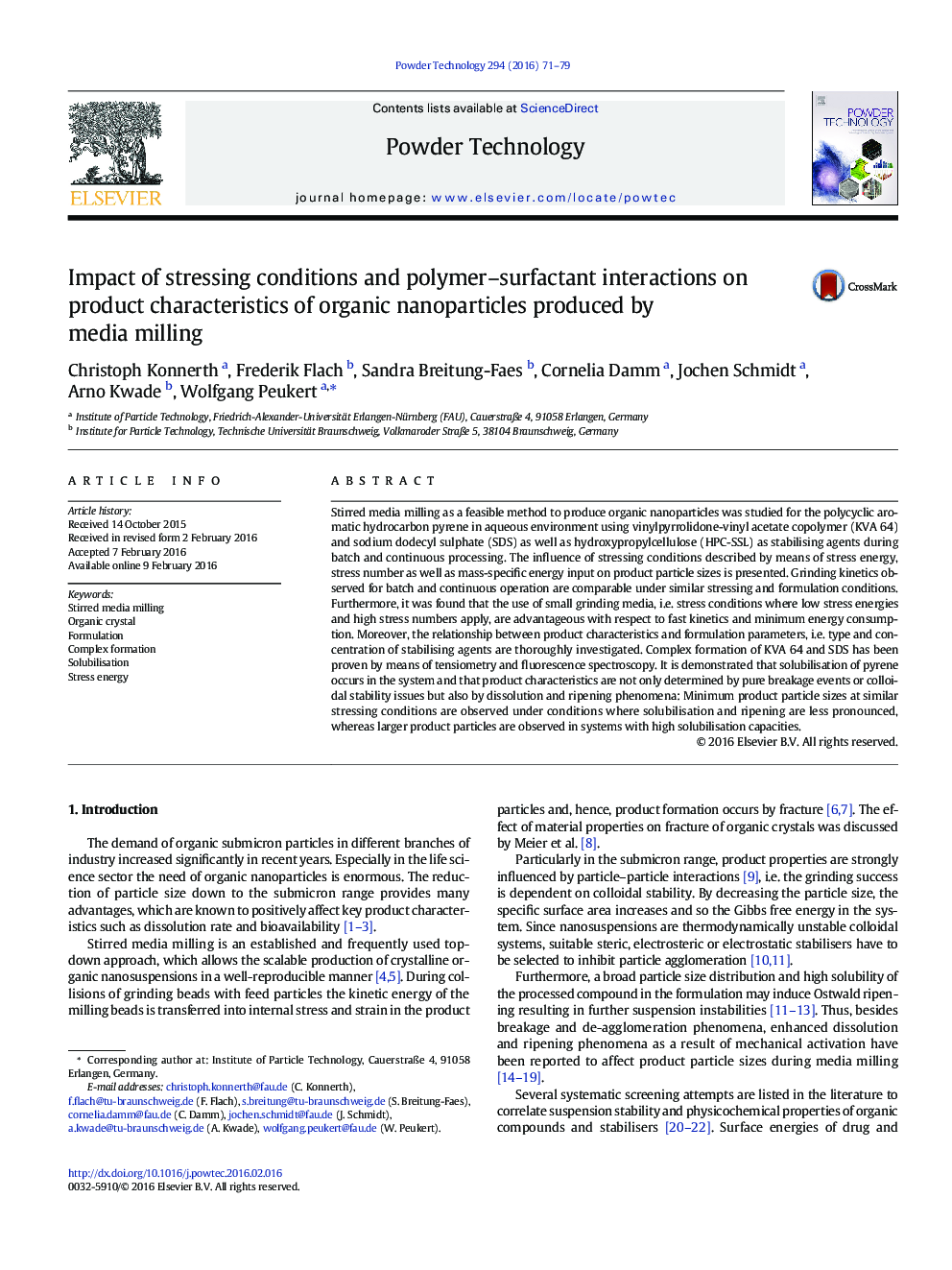| کد مقاله | کد نشریه | سال انتشار | مقاله انگلیسی | نسخه تمام متن |
|---|---|---|---|---|
| 235048 | 465627 | 2016 | 9 صفحه PDF | دانلود رایگان |
• Stress number is key parameter in stirred media milling of organic crystals.
• Polymer–surfactant complexation influences product characteristics.
• Final product particle size depends strongly on applied formulation.
• Product particle size dependent on dissolution equilibrium of the organic compound.
Stirred media milling as a feasible method to produce organic nanoparticles was studied for the polycyclic aromatic hydrocarbon pyrene in aqueous environment using vinylpyrrolidone-vinyl acetate copolymer (KVA 64) and sodium dodecyl sulphate (SDS) as well as hydroxypropylcellulose (HPC-SSL) as stabilising agents during batch and continuous processing. The influence of stressing conditions described by means of stress energy, stress number as well as mass-specific energy input on product particle sizes is presented. Grinding kinetics observed for batch and continuous operation are comparable under similar stressing and formulation conditions. Furthermore, it was found that the use of small grinding media, i.e. stress conditions where low stress energies and high stress numbers apply, are advantageous with respect to fast kinetics and minimum energy consumption. Moreover, the relationship between product characteristics and formulation parameters, i.e. type and concentration of stabilising agents are thoroughly investigated. Complex formation of KVA 64 and SDS has been proven by means of tensiometry and fluorescence spectroscopy. It is demonstrated that solubilisation of pyrene occurs in the system and that product characteristics are not only determined by pure breakage events or colloidal stability issues but also by dissolution and ripening phenomena: Minimum product particle sizes at similar stressing conditions are observed under conditions where solubilisation and ripening are less pronounced, whereas larger product particles are observed in systems with high solubilisation capacities.
Figure optionsDownload as PowerPoint slide
Journal: Powder Technology - Volume 294, June 2016, Pages 71–79
